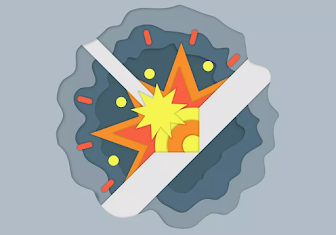International Conference on Welding Technology
10th Edition of International Conference on Welding Technology
https://welding-conferences.sciencefather.com/
Award Nomination - https://x-i.me/arunom
Abstract Submission- https://x-i.me/arumem
Automating Welding Tech for Wind Farm Structures

Onshore wind power farms along coastlines harness wind power to generate energy. Because automated welding technologies play a key role in the construction of these large structures, they should also adopt a green approach.
While onshore wind farms are popular in the United States, there is a huge push to establish offshore wind-power farms. These stationery turbines are comprised of 15-m diameter tubulars up to 300-mil thick at the base in some cases. They require hundreds of passes of weld volume, something most people will not pay multiple welders to do over a period of weeks.
By bringing automation to the process, Pemamek can place multiple electrodes in the semi-narrow groove to create a 16° included angle. It has an 8° radius at the bottom and an 8° sidewall. We have developed an automated tilting head that allows us to direct the deposition into the groove to achieve proper sidewall fusion on each individual pass. Our WeldControl 500 software, developed for multi-layer submerged arc welding, allows us to visually produce a diagram to predict where all individual welds will lie in the groove. We have precalculated how many weld grooves it will take, and we can control and monitor each weld group—with different ampere ratings on second-layer welds as needed.
The tower sections for both off- and onshore wind structures are tapered, but that’s where the similarities end. Offshore taper tower sections are quite a bit wider and taller because they hold larger power units. Additionally, manufacturing offshore towers and foundations is more challenging due to the harsh undersea environment. Automation helps facilitate both processes.
A new initiative is Floating Wind Power, which is essentially an anchored floating wind structure. There are hundreds of designs including flat panels, which look like large floating octagons comprised of eight flat walls. Tubular styles are reinforced tubular structures that act as floats. A pod of floats with a tower or multiple towers upon it connected by ladder-like structures is chained to the seabed to reduce environmental impact. Automated welding is the most efficient choice here, enabling greater control and precision for a stronger bond. Conversely, a manual welder is likely to adjust voltage, amperage and speed settings. While these welds might pass X-ray, RT and quality tests, this approach uses more energy and is less consistent. It’s been proven that overall electricity and energy consumption is lower with consistent welds.
Wave generators are being explored on the West Coast. These sub-sea or slightly above-sea devices use waves or currents to generate electricity. They are very expensive to make but are designed to last 100 years. That’s five times the life expectancy of a wind turbine but only about four times the cost.
These extremely heavy structures also need to be very robust because they are taking on currents and the changing sea. They’re always moving, generating electricity as they do so. We can use all of the aforementioned technologies for manufacturing with these as well as multi-pass submerged arc welding, even with high-nickel alloys and/or stainless steel.
Regardless of which energy source is constructed, weld flux will be used. Luckily, it can be reused. Similar in texture to kitty litter, flux is susceptible to unwanted moisture. To ensure this doesn’t happen, we vacuum the unused flux, allocate a vacuum classification system and redeposit the reusable flux into a heated vessel that removes moisture to the desired amount.
Then we mix it with incoming fresh flux to be reused, providing significant cost savings. The process saves on wire extrusion, electricity and all the elements of manufacturing flux (steam shovels literally lifting minerals out of the ground). We can peel the onion back in so many layers but, in the end, by using less you create less.
#welding #fabrication #metalwork #welder #iron #weldernation #tools #WeldingDescription #Aluminum #TigWelding #Cutting #Fabricate #StainlessSteel #WeldingEquipment #Oxy #FabricationShop #weldingblanket #weldingbook #weldingengineer #tigwelding.

Comments
Post a Comment